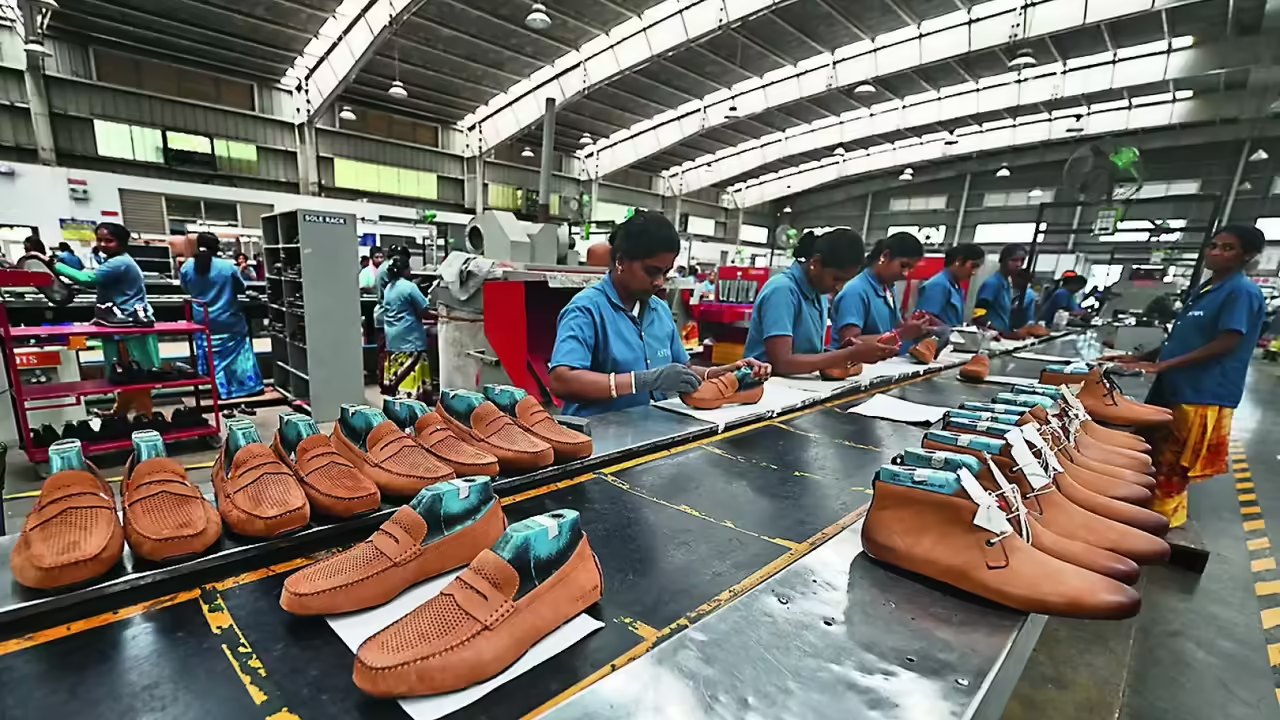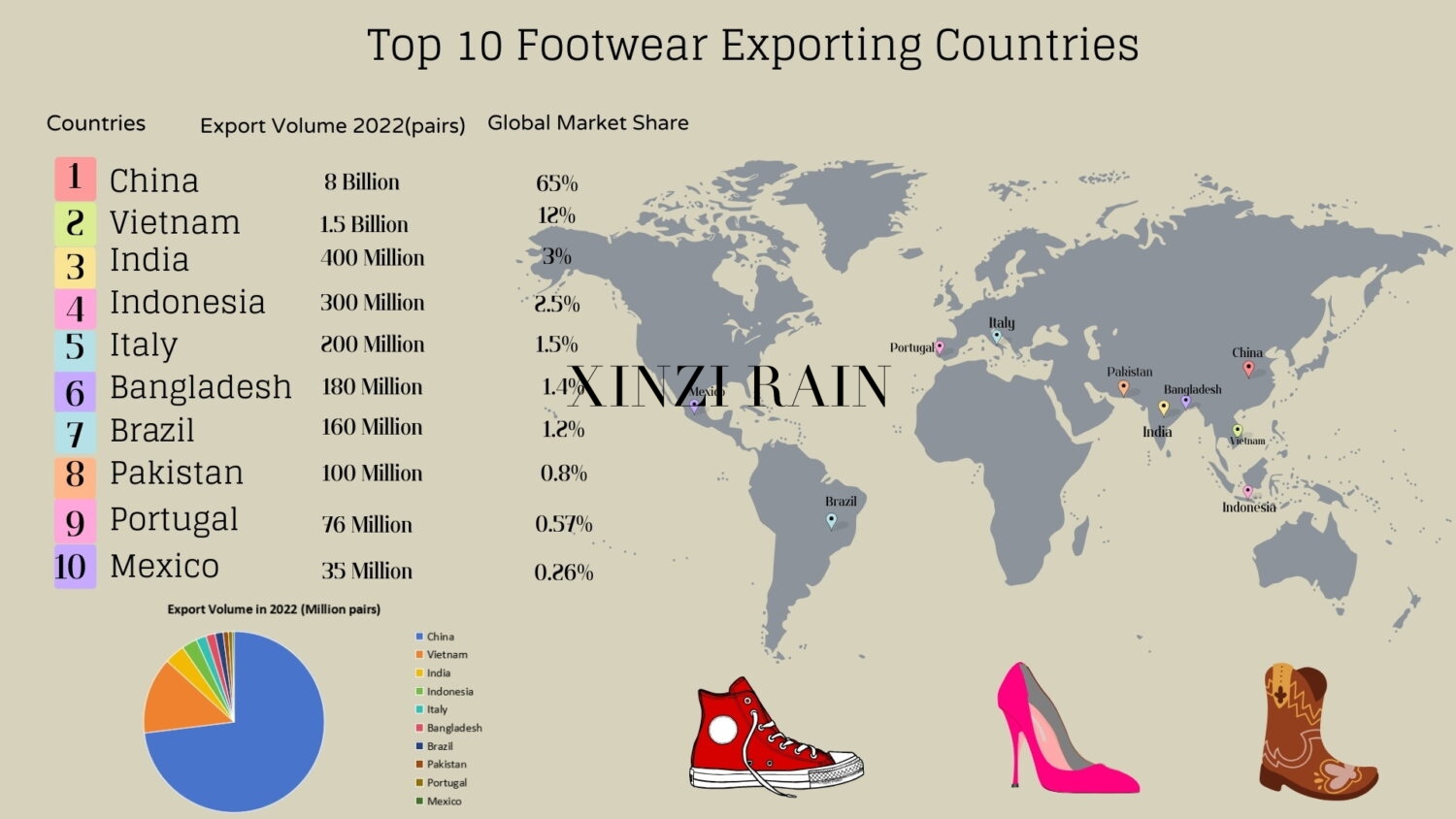The global footwear industry is transforming rapidly. As brands expand their sourcing beyond traditional markets, both China and India have become top destinations for footwear production. While China has long been known as the world’s shoe manufacturing powerhouse, India’s competitive costs and leather craftsmanship are increasingly attracting international buyers.
For emerging brands and private label owners, choosing between Chinese and Indian suppliers is not only about cost — it’s about balancing quality, speed, customization, and service. This article breaks down the key differences to help you find the right fit for your brand’s goals.
1. China: The Footwear Manufacturing Powerhouse
For more than three decades, China has dominated global footwear exports, producing over half of the world’s shoes. The country’s supply chain is unmatched — from materials and molds to packaging and logistics, everything is vertically integrated.
Main production hubs: Chengdu, Guangzhou, Wenzhou, Dongguan, and Quanzhou
Product categories: High heels, sneakers, boots, loafers, sandals, and even kids’ shoes
Strengths: Quick sampling, flexible MOQ, stable quality, and professional design support
Chinese factories are also strong in OEM and ODM capabilities. Many factories offer full design assistance, 3D pattern development, and digital prototyping to speed up the sampling process — making China ideal for brands seeking both creativity and reliability.


2. India: The Emerging Alternative
India’s footwear industry is built on its strong leather heritage. The country produces world-class full-grain leather and has centuries of shoemaking tradition, particularly in handmade and formal footwear.
Main hubs: Agra, Kanpur, Chennai, and Ambur
Product categories: Leather dress shoes, boots, sandals, and traditional footwear
Strengths: Natural materials, skilled craftsmanship, and competitive labor costs
However, while India offers affordability and authentic craftsmanship, its infrastructure and development speed are still catching up to China. Smaller factories may have limitations in design support, advanced machinery, and sample turnaround time.

3. Cost Comparison: Labor, Materials & Logistics
| Category | China | India |
|---|---|---|
| Labor cost | Higher, but offset by automation and efficiency | Lower, more labor-intensive |
| Material sourcing | Full supply chain (synthetic, PU, vegan leather, cork, TPU, EVA) | Mainly leather-based materials |
| Production speed | Fast turnaround, 7–10 days for samples | Slower, often 15–25 days |
| Shipping efficiency | Highly developed port network | Fewer ports, longer customs process |
| Hidden costs | Quality assurance and consistency save rework time | Possible delays, re-sampling costs |
Overall, while India’s labor is cheaper, China’s efficiency and consistency often make the total project cost comparable — especially for brands prioritizing speed to market.
4. Quality & Technology
China’s shoe factories lead in advanced manufacturing technologies, including automated stitching, laser cutting, CNC sole carving, and digital pattern systems. Many suppliers also provide in-house design teams for OEM/ODM clients.
India, on the other hand, maintains a handcrafted identity, especially for leather footwear. Many factories still rely on traditional techniques — perfect for brands seeking artisanal appeal rather than mass production.
In short:
Choose China if you want precision and scalability
Choose India if you value handmade luxury and heritage craftsmanship
5. Customization & OEM/ODM Capabilities
Chinese factories have transformed from “mass producers” to “custom creators.” Most offer:
OEM/ODM full service from design to shipment
Low MOQ (starting from 50–100 pairs)
Material customization (leather, vegan, recycled fabrics, etc.)
Logo embossing and packaging solutions
Indian suppliers generally focus on OEM only. While some offer customization, most prefer working with existing patterns. ODM collaboration — where factories co-develop designs — is still developing in India.

6. Sustainability & Compliance
Sustainability has become a major factor for global brands.
China: Many factories are certified by BSCI, Sedex, and ISO. Manufacturers now use sustainable materials such as Piñatex pineapple leather, cactus leather, and recycled PET fabrics.
India: Leather tanning remains a challenge due to water usage and chemical treatment, though some exporters comply with REACH and LWG standards.
For brands emphasizing eco-friendly materials or vegan collections, China currently offers a wider selection and better traceability.
7. Communication & Service
Clear communication is crucial for B2B success.
Chinese suppliers often employ multilingual sales teams fluent in English, Spanish, and French, with fast online response times and real-time sample updates.
Indian suppliers are friendly and hospitable, but communication styles may differ, and project follow-up can take longer.
In short, China excels in project management, while India excels in traditional client relationships.
8. Real-World Case Study: From India to China
A European boutique brand initially sourced handmade leather shoes from India. However, they faced issues with long sampling times (up to 30 days) and inconsistent sizing across batches.
After shifting to a Chinese OEM factory, they achieved:
40% faster sample turnaround
Consistent size grading and fit
Access to innovative materials (like metallic leather and TPU soles)
Professional packaging customization for retail
The brand reported a 25% reduction in production delays and better alignment between creative vision and final product — demonstrating how the right manufacturing ecosystem can transform a brand’s supply chain efficiency.
9. Pros & Cons Summary
| Factor | China | India |
|---|---|---|
| Production Scale | Large, automated | Medium, handcraft-oriented |
| Sample Time | 7–10 days | 15–25 days |
| MOQ | 100–300 pairs | 100–300 pairs |
| Design Capability | Strong (OEM/ODM) | Moderate (mainly OEM) |
| Quality Control | Stable, systemized | Varies by factory |
| Material Options | Extensive | Limited to leather |
| Delivery Speed | Fast | Slower |
| Sustainability | Advanced options | Developing stage |

10. Conclusion: Which Country Should You Choose?
Both China and India have unique strengths.
If your focus is on innovation, speed, customization, and design, China remains your best partner.
If your brand values handcrafted tradition, authentic leatherwork, and lower labor costs, India offers great opportunities.
Ultimately, success depends on your brand’s target market, price positioning, and product category. Partnering with a reliable manufacturer who aligns with your vision can make all the difference.
Ready to start your custom shoe project?
Partner with Xinzirain, a trusted Chinese OEM/ODM footwear manufacturer specializing in high heels, sneakers, loafers, and boots.
We help global brands bring creative ideas to life — from design and prototyping to mass production and global delivery.
Explore Our Custom Shoe Service
Visit Our Private Label Page
This blog compares Chinese and Indian shoe suppliers in terms of cost, production speed, quality, customization, and sustainability. While India shines in traditional craftsmanship and leatherwork, China leads in automation, efficiency, and innovation. Choosing the right supplier depends on your brand’s long-term strategy and market segment.
Suggested FAQ Section
Q1: Which country offers better shoe quality — China or India?
Both can produce quality footwear. China excels in consistency and modern technology, while India is known for handcrafted leather shoes.
Q2: Is manufacturing in India cheaper than in China?
Labor costs are lower in India, but China’s efficiency and automation often offset the difference.
Q3: What is the average MOQ for Chinese and Indian suppliers?
Chinese factories often accept smaller orders (50–100 pairs), while Indian suppliers typically start at 100–300 pairs.
Q4: Are both countries suitable for vegan or eco-friendly shoes?
China currently leads with more sustainable and vegan material options.
Q5: Why do global brands still prefer China?
Because of its complete supply chain, fast sampling, and high design flexibility, especially for private label and custom collections.